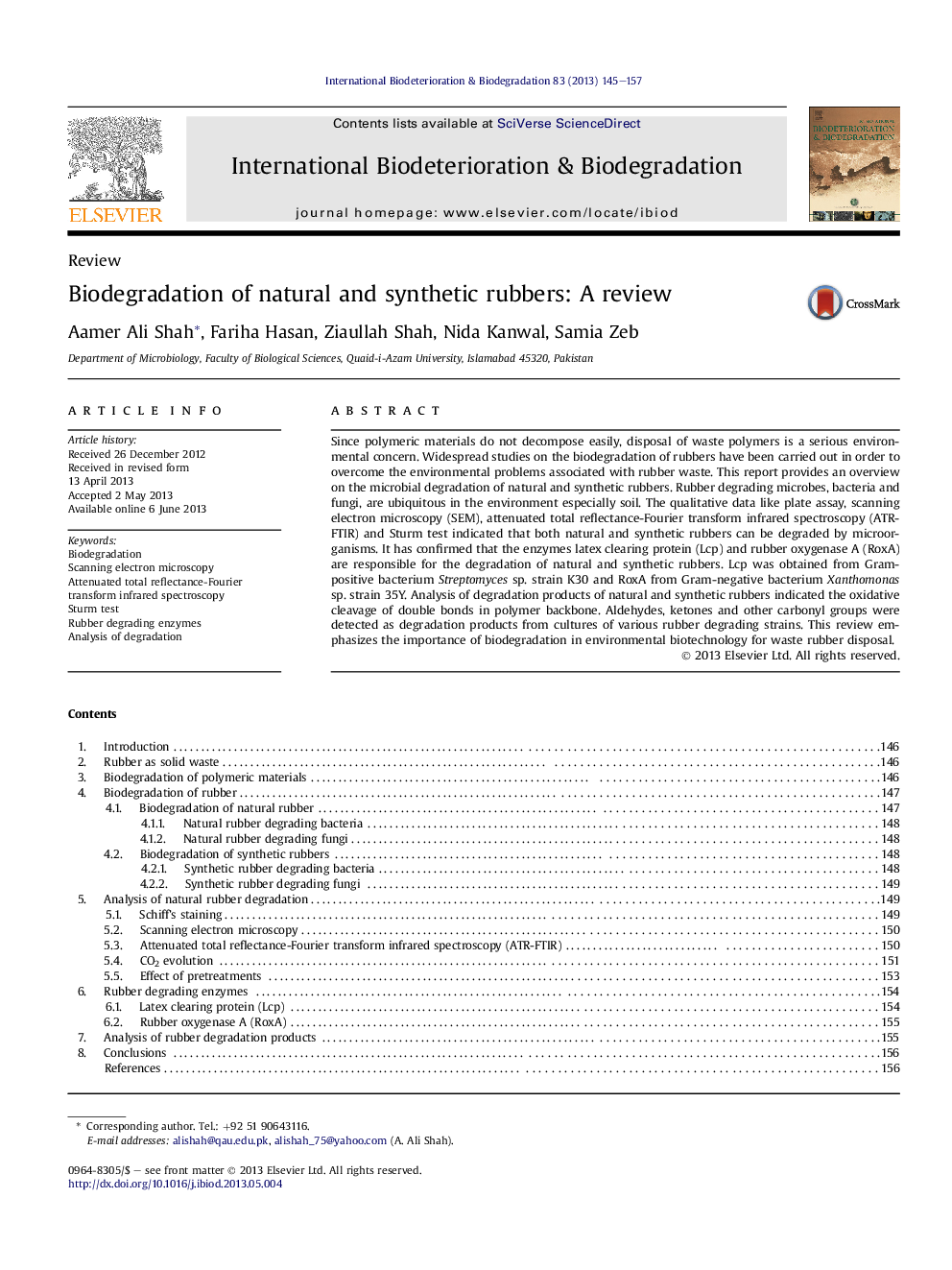| Article ID | Journal | Published Year | Pages | File Type |
|---|---|---|---|---|
| 4364894 | International Biodeterioration & Biodegradation | 2013 | 13 Pages |
•Degradation of rubber by various bacterial and fungal species have been discussed.•Methods used for analysis of biodegradation of plastics have been discussed.•Role of different enzymes in degradation of rubbers has also been discussed.•Pathway of degradation of rubbers has been explained.
Since polymeric materials do not decompose easily, disposal of waste polymers is a serious environmental concern. Widespread studies on the biodegradation of rubbers have been carried out in order to overcome the environmental problems associated with rubber waste. This report provides an overview on the microbial degradation of natural and synthetic rubbers. Rubber degrading microbes, bacteria and fungi, are ubiquitous in the environment especially soil. The qualitative data like plate assay, scanning electron microscopy (SEM), attenuated total reflectance-Fourier transform infrared spectroscopy (ATR-FTIR) and Sturm test indicated that both natural and synthetic rubbers can be degraded by microorganisms. It has confirmed that the enzymes latex clearing protein (Lcp) and rubber oxygenase A (RoxA) are responsible for the degradation of natural and synthetic rubbers. Lcp was obtained from Gram-positive bacterium Streptomyces sp. strain K30 and RoxA from Gram-negative bacterium Xanthomonas sp. strain 35Y. Analysis of degradation products of natural and synthetic rubbers indicated the oxidative cleavage of double bonds in polymer backbone. Aldehydes, ketones and other carbonyl groups were detected as degradation products from cultures of various rubber degrading strains. This review emphasizes the importance of biodegradation in environmental biotechnology for waste rubber disposal.
